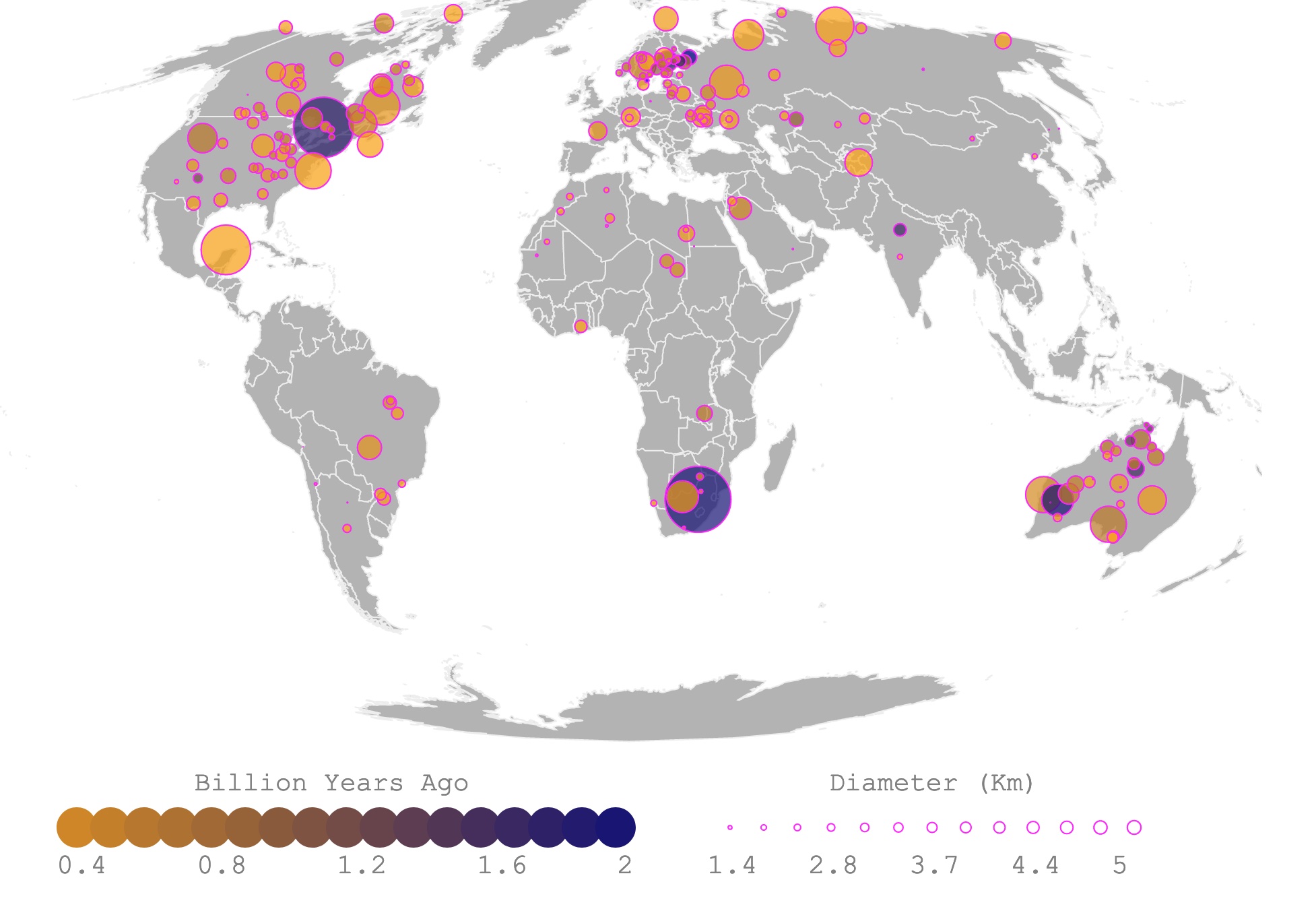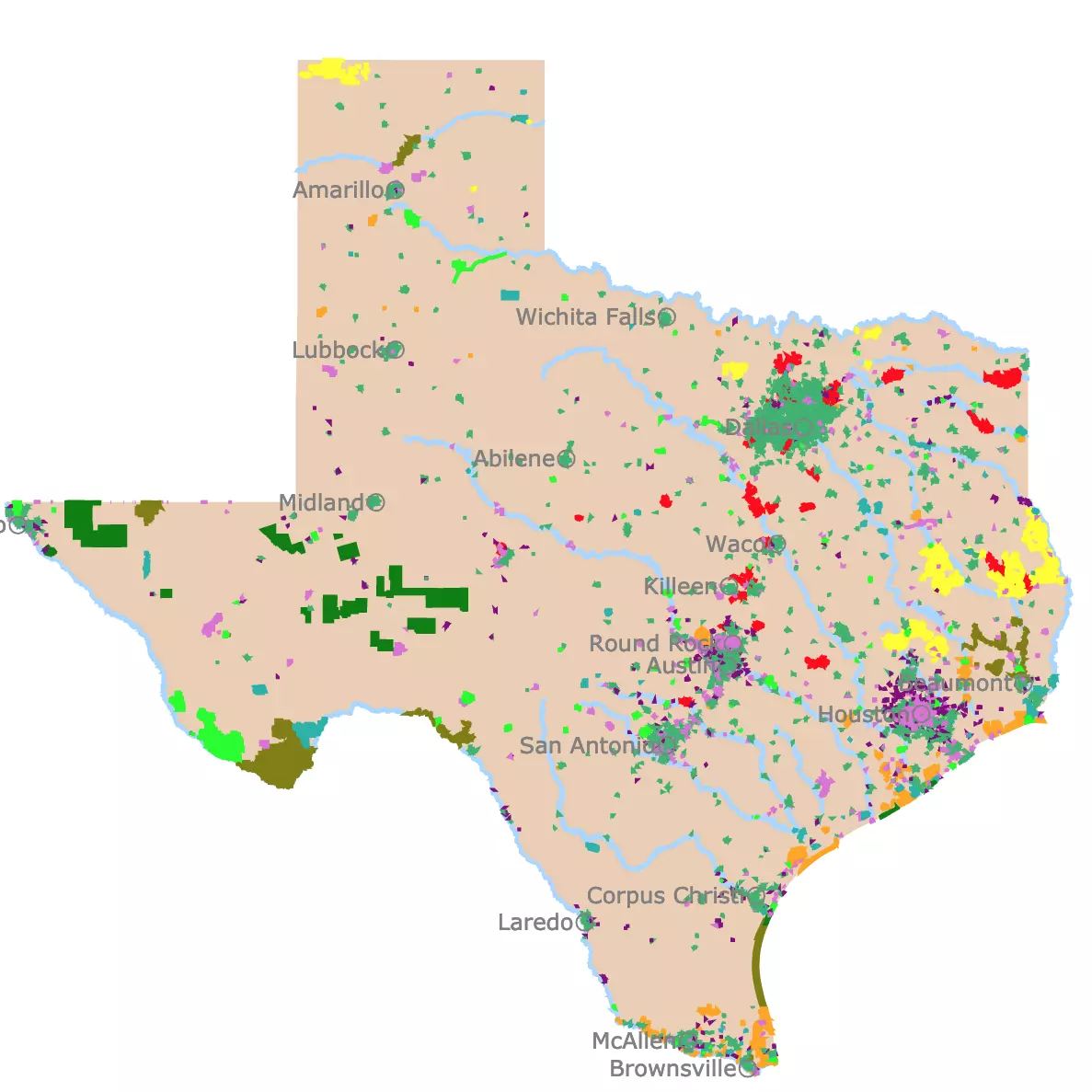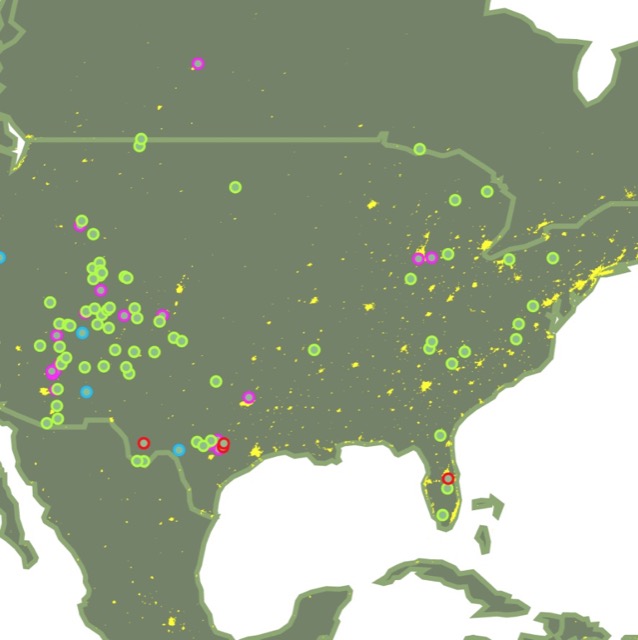Map of Meteorite Impact Craters
This interactive map shows the location of Meteorite Impact Craters around the world. The size shows the crater Diameter in Km. The color represents age. Hover over the map for name, location, exact diameter, and age. For more detail, zoom on the map. For more information, scroll down.
Terrestrial Impact Craters
Impact craters occur when objects like asteroids or meteorites crash into larger objects like planets or moons. They are usually circular and have raised rims.

To form a crater, the solid object colliding has to travel very fast! The clash vaporizes the moving object and creates shockwaves on the ground. Most of the material falls around the rim.
The result is not just the crater, but the melted ground and recrystallized rocks, Source: NASA.
Craters are circular, not because the shape of the object hitting is round, but because the material impacted flies in all directions. Elongated craters are determined by the strike angle of the impactor.
Craters are the most frequent feature on solid planets and moons, LPI
The moon has many visible impact craters. The craters look perfectly outlined after millions of years because the moon has almost no atmosphere, rain, wind, or weathering.
Earth does have an atmosphere, weathering, and erosion, therefore finding Earth's craters is much harder.
Some craters are hidden under piles of sediment. Some of Earth's craters are also destroyed through plate tectonics and volcanic activity.
Crater Size
It is estimated that the record of all craters with a diameter larger than 37miles (60Km) is complete. They are large enough to survive erosion but destroyed by plate tectonics.
This means current efforts need to focus on finding small craters.
What determines the size of a crater are:
- The velocity of the meteorite
- The mass of the meteorite
- The density of the meteorite
- The geology of the impacted surface, Let's Talk Science.
On average, an object hits Earth at 12mi/s (20Km/s). At this speed, the crater is 20 times the diameter of an impact object!
Crater Parts
These are the major crater parts: Source, Lunar and Planetary Institute.
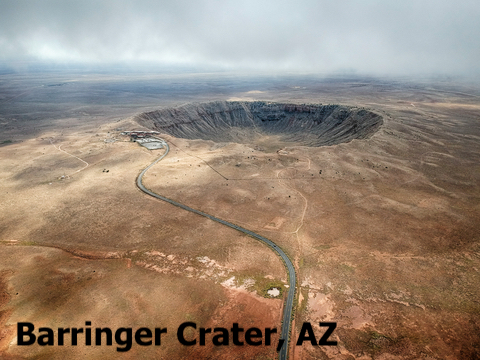
- Floor: Bowl or flat-shaped bottom of a crater.
- Central Peaks: These are peaks formed on the floor's central area. It occurs on large craters, as the rock material rebounds from the impact.
- Walls: These are the interior sides of the crater.
- Rim: This is the elevated circumference surrounding the edge of the crater.
- Ejecta: This is the material ejected out of the crater when the meteorite is impacted.
- Rays: These are the beams stretching out from the crater. They are made of ejecta rocks. They have been observed on moons and other planets, not Earth.
Impact Crater Types
- Simple Craters: These are small craters shaped like a bowl. Their depth to diameter ratio is 1:5 to 1:7.
- Complex Craters: These craters have different features like central peaks and multiple rings. They have shallower depth compared to their diameter (1:10 to 1:20) ratio, Source: Solar Views
Impact Crater Facts
- The largest impact crater on Earth is the Vredefort crater. Located in South Africa, it has a diameter of 100–200 mi (160–300 km).
- The oldest crater is the Yarruba impact structure in Western Australia. It is about 2.2 billion years old.
- The largest crater in the United States is the Chesapeake Bay. It is 52mi (85Km) in diameter, and it is hard to see because it is covered by water and rocks.
- The only clearly visible crater from space is Lake Manicouagan, in Quebec, Canada.
- Spacecraft orbital imaging has been used to find remote terrestrial craters.
- Most craters have been found in North America, Europe, and Australia, where there is little tectonic activity and lots of resources.
- The U.S. state with the most craters is Texas.
- Impact craters are also called Astroblemes.
- Small craters are often simple bowled.
- Large craters are more complex because they collapse.
- Some impact craters turn into lakes, like the East and West Clearwater lakes in Canada.
- The Mistastin crater in Canada has a central peak turned into an island. The impact that created this crater reached temperatures of (4,298°F) 2,370°C. That is the hottest temperature recorded on Earth, source National Post.
- Earth has 192 impact craters confirmed and depicted in this map. There are other craters still to be confirmed.
- Mars has 300,000 impact craters; the moon has too many to count.
- One of the largest diamond fields in the world is the Popigai Crater, created by an asteroid that fell in Siberia. The impact melted graphite into diamonds instantly.
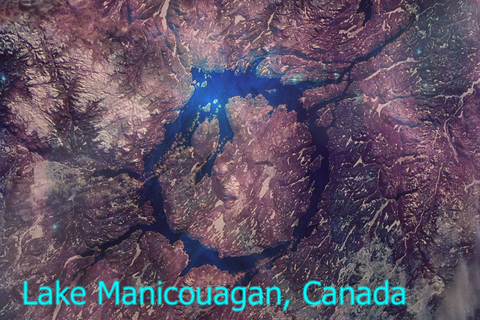

Notorious Impact Craters
Meteor Crater
Also known as Barringer Crater is located in Arizona. This was the first recognized terrestrial crater.
It is claimed that the Barringer crater is the best-preserved impact crater on Earth.
It is estimated that 50,000 years ago, one or several iron meteorites struck Arizona's rocky plain. Part of it vaporized, and part of it melted on site.
The crater is 700ft (213m) deep and 4,000ft (1.2Km) in diameter.
Chicxulub Crater
The Chicxulub crater is located in the Yucatan Peninsula, Mexico.
Chicxulub crater is 110mi (177Km) in diameter and is buried under several hundred meters of sediment.
The crater is not evident from the ground but some of its remains are in the form of cenotes throughout the Yucatan peninsula.

About 65 million years ago, a meteorite the size of a small city, hit the area. The force with which it hit Earth was equivalent to 100 million megatons of TNT.
The effect was so devastating it unleashed earthquakes, tsunamis, ejected firestorms, and volcanic eruptions worldwide. The dust covered the world, blocking sunlight, and preventing photosynthesis.
K-T Boundary
As added evidence of this cataclysmic event, it is the K-T boundary layer. Now referred to as the Cretaceous–Paleogene (K–Pg) boundary.
This layer is 65 million years old, and remnants of this layer are observed worldwide. The K-T boundary is rich in Iridium, a rare element found in abundance on meteorites.
The Chicxulub crater and the K-T boundary have been used as evidence to point out that this impact obliterated dinosaurs and many other organisms. This is currently the most accepted theory.
Wolfe Creek Crater
Wolfe Creek Crater is located in northern West Australia. It is 300,000 years old and 0.544 miles (0.87Km) wide. The crater rim is 25m above the ground, and the floor is 164 feet (50 meters) below the rim.

This crater is relatively well preserved. Iron and impact glass has been found surrounding this crater, Solarviews
Gosses Bluff
Gosses Bluff, is also known as Tnorala, is located in Australia's northern territory.
This crater was orinally larger, but due to erosion is now only 2.7 miles (4.5 km) in diameter.
This crater is of major cultural and aboriginal significance.
Lonar Crater
This crater is located in southern India. This crater is 6,000 feet (1,830 meters) wide, 500 feet (150 meters), and 35,000 to 50,000 years old.
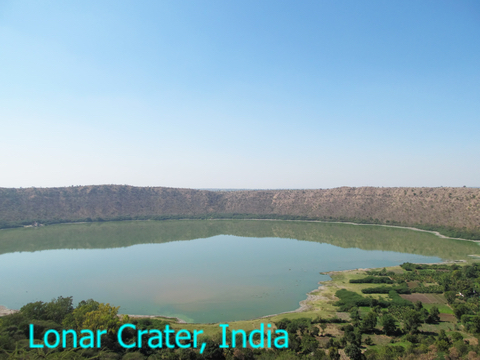
At first, it was believed this was a volcanic crater because it was found on basaltic rock left by volcanic eruptions ~65,000,000 years ago.
Later it was determined that the crater was about 50,000 years or less. This is the only impact crater on Basaltic rock. Space.com
Pingualuit Crater
Pingualuit crater is situated in Quebec, Canada. This crater is 2.1 miles (3.4 km) wide, 876 feet (267 meters) deep, and 1.4 million years old.
The crater is currently filled with rainwater, but during the Pleistocene Ice Age, it was covered by ice. During this long period, its sediments were untouched. Hence, it is a unique environment for geologists to study Earth's history.
Affiliate Disclosure
Databayou.com is a participant in the Amazon Services LLC Associates Program, an affiliate advertising program designed to provide a means for sites to earn advertising fees by advertising and linking to Amazon.com. Databayou.com also participates in affiliate programs with Clickbank, CJ, and other sites.
If you plan to learn, own, or find meteorites, take a look at these items found on Amazon. They can definitely improve your experience.
- In case you want to learn more about the Chesapeake Bay crater, take a look at Chesapeake Invader: The largest impact crater on the U.S.
- For a special wedding gift, look into getting the Meteorite Shavings: Engagement Ring, handmade.
- If you want to keep a piece of a meteorite with you, or as a special gift, check this Medallion Pendant: Made of Pallasite Meteorite and Sterling Silver
Resources for Meteorite Landings Map
The data for impact craters was obtained by Wikipedia.
The Shapefiles for countries were downloaded from Natural Earth.
Made by Luz K. Molina with D3.js.
